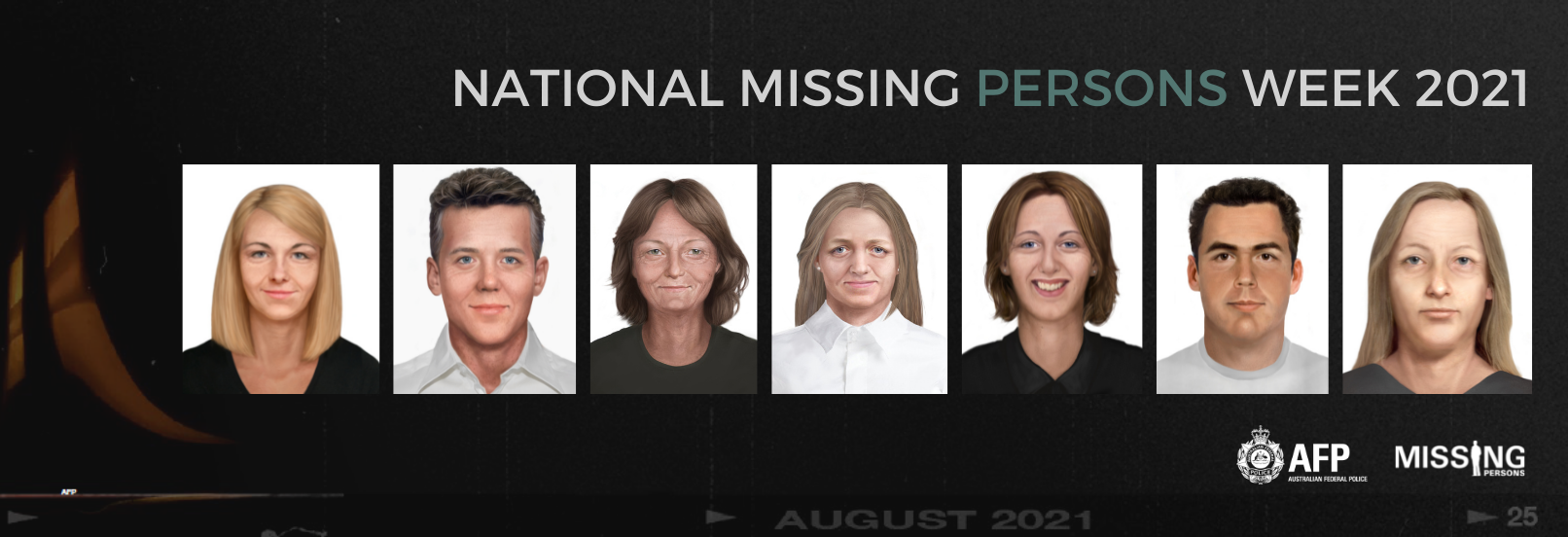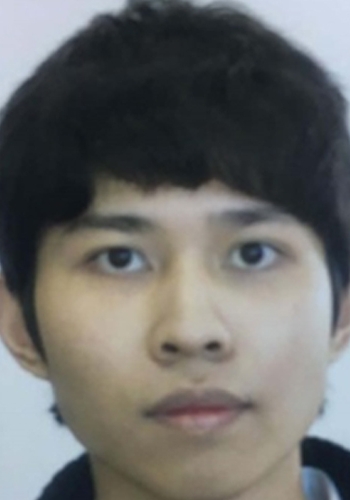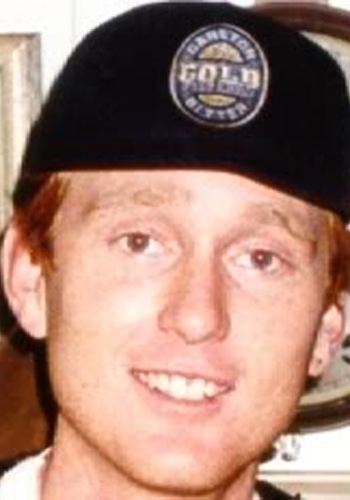National Missing Persons Week 2021: Aged images of long-term missing persons could provide key to solving heartbreaking mysteries

The Australian Federal Police is releasing a unique series of images that capture how seven Australians, who have been missing for up to 40 years, could look today as it urges the public to help solve the mystery behind these heartbreaking cases.
The age progressed images have been created by AFP forensic artists and will be featured across a series of short videos to be progressively launched from today for National Missing Persons Week 2021 (NMPW), which runs from 1-7 August. The theme for NMPW 2021 is: “Their face might have changed. Missing them hasn’t.”
Families of each of the missing persons were directly involved in the production of the videos, providing personal images and describing the emotions and heartache they have lived with while searching tirelessly for their missing loved one.
Minister for Home Affairs Karen Andrews said National Missing Persons Week shone a light on those still missing, but also on the families, friends, and loved ones they left behind.
“If the AFP’s advanced imagery and world leading forensic artistry can provide answers to just one family, this initiative would be a great success,” Minister Andrews said.
“As these aged images demonstrate so clearly – the pain, heartbreak, and tragedy of a missing person’s case can linger for many years. They also serve as a stark reminder of the Australian law enforcement’s dogged pursuit of answers, and of justice for those who may have disappeared in suspicious circumstances.”
The AFP’s National Missing Persons Coordination Centre (NMPCC) Coordinator Jodie McEwan said the age progression campaign was an opportunity to educate the broader community on the need to be aware that long-term missing persons have aged and could look very different to the last time they were seen.
“This year’s campaign acknowledges that as people age, their appearance changes and this obviously also applies to those who are missing. Using the capabilities of specialist AFP forensic artists who work closely with family members, we are able to produce a depiction of how the missing person could look today.” Ms McEwan said.
“It is hoped the images, some of which show how a person may look more than 40 years after going missing, provide the community with an updated idea of who we continue to search for. The seven people who will be featured throughout the week all have families who continue to wait for answers. They are sons and daughters, parents, siblings, colleagues and friends. They are more than faces on a poster or a website, they are real people who are valued members of their communities and we continue the search to find them. If you have any piece of information that you think could assist police, please contact Crime Stoppers on 1800 333 000.”
William Fenner has spent the past 22 years seeking answers to the whereabouts of his mother Christine, who went missing from Bundaberg, Queensland. He said that if his mother happened to see the campaign, he would want to pass on one simple message to her.
“I would say to her that I love her,” he said. “I love her very much and she is very much missed by the family. I still wish she was here with us in this life, to come and share laughter and fun times. It definitely means a lot to get this far down the track and still have people that are willing to help me.”
“My mum’s wish was for her ashes to be scattered in Fremantle, WA. If she is no longer alive, we would love to be able to honor this wish so we ask that if anyone has information, please come forward.” says William.
The NMPCC developed the campaign in partnership with creative agency Coordinate and state and territory police missing persons units, which supplied the following long-term missing person’s profiles:
- Suzanne Lawrance (VIC)
- Christine Fenner (QLD)
- Laura Haworth (ACT)
- Jason Mazurek (TAS)
- Sophie Woodman (WA)
- Nathan McLaughlin (NT)
- Elaine Johnson (NSW)
To view the age progression videos, please follow AFP and NMPCC social media channels here: https://www.facebook.com/AFPNMPCC and https://www.facebook.com/AusFedPolice
National Missing Persons Week
National Missing Persons Week is supported by the Outdoor Media Association (OMA) whose members have generously donated advertising space in support of NMPW 2021. The donated space will highlight the seven missing persons’ profiles on either static or moving billboards across Australia.
Members of the community sharing their stories and support throughout NMPW 2021 are encouraged to use the hashtag #NMPW2021.
In 2020, there were more than 51,000 missing persons reports made to police in Australia, which is more than 140 on every day of the year. Any person missing for more than three months is classified as a long-term missing person. There are approximately 2,600 long-term missing persons in Australia.
For further information on the age progression process please visit the NMPCC website: https://www.missingpersons.gov.au/support/age-progression
Media is encouraged to read the Counselling Framework for guidance when working with families of missing people.
About missing persons in Australia
In Australia, a missing person is defined as anyone who is reported missing to police, whose whereabouts are unknown, and where there are fears for the safety or concern for the welfare of that person. A long-term missing person is someone who has been missing for more than three months.
About the NMPCC
The AFP’s National Missing Persons Coordination Centre plays an active role in coordinating national police efforts, and educating the Australian community to prevent the incidence and impact of missing persons in Australia.
The National Missing Persons Coordination Centre is a non-operational arm of the AFP which put simply means, the team is not involved in the investigations of missing persons. All investigations are undertaken by the relevant State and Territory police.
In support of NMPW, the AFP NMPCC coordinates an annual police campaign with State and Territory police, highlighting a different theme each year to raise awareness of the significant issues associated with missing persons and profile long-term missing persons to reduce the incidence and impact of missing persons in Australia.
The annual police campaign compliments other campaigns, events, initiatives and memorial services run by families with a missing loved one, advocacy networks, government and non-government organisations, and members of the public.
Media enquiries
AFP Media: (02) 5126 9297





